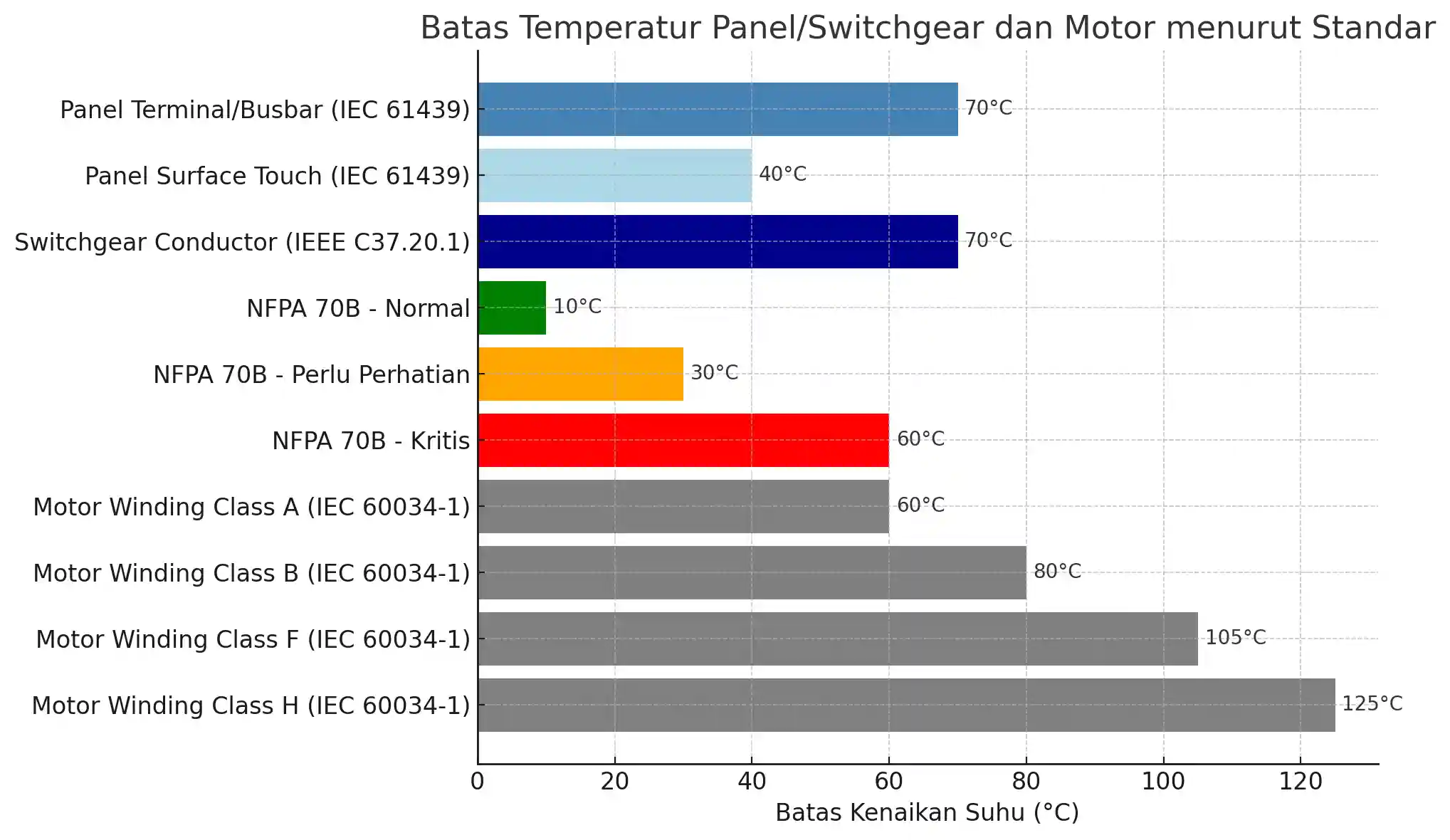Handheld Thermal Cameras
Portable thermography for electrical & mechanical assets. Options range from entry to expert models, offering high resolution, advanced focus, Wi-Fi/cloud workflows, and robust reporting.
We’re building more than innovative technologies; we’re striving to create a more sustainable, more efficient,
and safer future by enhancing human perception through best-in-class intelligent imaging & sensing solutions.
As the authorized distributor of FLIR in Indonesia, PT Putranata Adi Mandiri is dedicated to delivering world-class solutions in Thermal Imaging, Condition Monitoring, and Predictive Maintenance. Since 1988, we have been at the forefront of reliability improvement initiatives, helping industries across the nation enhance equipment performance, minimize downtime, and improve workplace safety.
Our partnership with FLIR allows us to bring the latest innovations in infrared cameras, vibration analysis, oil condition monitoring, and advanced diagnostic tools to a wide range of industries, including manufacturing, energy, oil & gas, mining, and power generation. Beyond supplying cutting-edge technology, we are committed to offering comprehensive training, technical support, and after-sales services to ensure that every solution provides maximum value for your operations.
At PT Putranata Adi Mandiri, we believe that reliability and efficiency are the foundation of industrial excellence. With more than three decades of experience, we continue to strengthen our role as a trusted partner for companies aiming to embrace Industry 4.0, digital transformation, and smart maintenance practices. Our mission is simple: to empower your business with the tools and knowledge needed to stay ahead in today’s competitive world.
Discover the future of Predictive Maintenance with FLIR Indonesia – together with PT Putranata Adi Mandiri, your reliable partner in industrial innovation.

Upgrade to the Leader in Condition Monitoring and Save 20%! This exclusive offer is valid until 31st December 2025*(ASEAN region only).
As the official distributor of FLIR in Indonesia,PT Putranata Adi Mandiri is proud to deliver a complete range of advanced Thermal Imaging, Condition Monitoring, and Industrial Inspection Solutions. With more than three decades of experience since 1988, we are not only a supplier, but also a trusted partner helping industries achieve greater reliability, efficiency, and safety. Our mission is to equip companies with cutting-edge FLIR technology, supported by professional training and dedicated after-sales services.
PT Putranata Adi Mandiri brings you a broad selection of FLIR products designed for various industries including manufacturing, oil & gas, energy, mining, power generation, and research. Each product line is engineered to deliver accurate data and actionable insights, helping you make better decisions for maintenance, safety, and productivity.
By working with PT Putranata Adi Mandiri, you gain more than access to world-leading FLIR technologies. You benefit from our strong track record in providing consultation, training, integration, and after-sales support. We understand the challenges of Indonesian industries and are committed to delivering not just equipment, but also solutions that empower your business to excel in predictive maintenance, reliability engineering, and Industry 4.0 transformation.
Discover the full range of FLIR solutions with PT Putranata Adi Mandiri – your trusted partner for industrial innovation, safety, and reliability in Indonesia.

Ini grafik batas kenaikan suhu dari standar IEC, IEEE, NFPA 70B, dan IEC 60034-1 untuk panel/switchgear serta motor.
Elevate equipment reliability by combining infrared thermography and acoustic imaging. PT Putranata Adi Mandiri delivers FLIR solutions that reveal hidden faults early—before they trigger downtime, safety incidents, or energy loss.
Traditional inspections often miss developing faults because many failure modes are invisible to the naked eye and inaudible without specialized tools. FLIR thermal imaging visualizes temperature anomalies that indicate electrical resistance, mechanical friction, insulation damage, and process imbalance. FLIR acoustic cameras turn ultrasound into an intuitive sound map, pinpointing compressed air and gas leaks, vacuum leaks, and mechanical faults such as bearing defects or partial discharges—fast, safely, and at a distance.
We offer a comprehensive portfolio to match your reliability goals—from handheld inspections to 24/7 automated monitoring.
Portable thermography for electrical & mechanical assets. Options range from entry to expert models, offering high resolution, advanced focus, Wi-Fi/cloud workflows, and robust reporting.
Continuous thermal monitoring of critical equipment or processes, with I/O and protocol support for SCADA/PLC integration, alarming, and data trending.
Real-time sound mapping simplifies leak surveys and mechanical diagnostics. Quantify leak rates, prioritize fixes, and measure savings to drive continuous improvement.
Streamlined inspection routes, image organization, temperature trend charts, acoustic leak logs, and customizable reports to standardize reliability workflows.
Thermography best practices, acoustic survey methods, route setup, acceptance criteria, and program auditing—delivered by experienced reliability practitioners.
Panels, busbars, breakers, terminations, transformers. Detect loose joints, overloads, imbalance, and insulation degradation.
Motors, pumps, fans, gearboxes. Reveal misalignment, friction, inadequate lubrication, and bearing wear.
Find and quantify leaks in compressed air, steam, nitrogen, or vacuum systems to reduce energy consumption.
Monitor refractory, furnaces, heat exchangers, and temperature-critical processes for uniformity and efficiency.
Tip: Combine thermal, acoustic, and vibration data for confident decisions and faster root-cause analysis.
PT Putranata Adi Mandiri — your local partner for FLIR thermal and acoustic condition monitoring programs.
Overheating in conductors, loose terminations, phase imbalance, overloaded circuits, friction in bearings, misalignment, cooling failures, and uneven process temperatures.
By visualizing ultrasonic signatures of leaks, it quantifies loss rates so you can prioritize repairs that deliver the largest kWh or compressor-load reductions.
Yes—fixed thermal cameras and software can be tied into SCADA/PLC, while inspection data can sync to CMMS/EAM and cloud reporting to streamline work orders.
Condition monitoring is about more than maintaining equipment: it’s a critical task that can ensure power keeps flowing, machines keep working, equipment lasts longer, and companies avoid breakdowns.
PT. Putranata Adi Mandiri
Grand Slipi Tower 43rd floor
Jl. Letjend S.Parman Kav.22-24
Jakarta 11480
Telp. +6221 29022588
Budi Winarto
HP/WA 0811105870